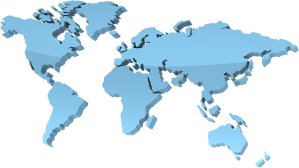 5 things you need to understand the Iran deal:
5 things you need to understand the Iran deal:
The U.S. and our international partners have secured the strongest nuclear arrangement ever negotiated. Thanks to the nuclear deal — formally known as the Joint Comprehensive Plan of Action (JCPOA) — the world can verifiably prevent Iran from obtaining a nuclear weapon.
It’s an historic deal. It’s vital to our national security and that of our allies, like Israel. It’s also very detailed and can seem a bit complicated. So if you’re looking to dive deep into the details, here are five things you should explore to better understand why this deal will ensure Iran’s nuclear program will remain exclusively peaceful moving forward.
Watch This: President Obama’s speech at American University
Fifty-two years ago, President John F. Kennedy delivered a speech at American University on the importance of peace in the nuclear age. This week, President Obama returned there to do the same. He outlined exactly what’s in the Iran deal and what’s at stake should Congress reject it.
Take a look — it’s worth the watch:
Print This: A packet of everything on the Iran deal
Looking for a deep dive into the specifics of the JCPOA? Want to know what security officials, nuclear scientists, and other experts have to say about it?
Share This: A few FAQs on the Iran deal
As the President has said, there’s a lot of misinformation and falsehoods out there about what exactly is in the deal and how it will work.
Read This: The enhanced text of the Iran deal
You can read all 159 pages of the Iran deal with comments from the people who negotiated it and who will implement it.
Find it on Medium — then share it with everyone who wants to dig into the specifics of the way the deal provides unprecedented transparency to monitor Iran’s nuclear fuel cycle, the robust verification regime, and more.
Follow This: @TheIranDeal
Want updates on the Iran deal in realtime?
Follow @TheIranDeal for live fact-checks, news updates, and exclusive insights on the significance of this historic deal — along with the next steps we need to take to prevent Iran from obtaining a nuclear weapon and avoid another conflict in the Middle East.
As Congress moves through its 60-day review period of the deal, stay tuned for more updates on this important diplomatic achievement.
Thanks,
The White House Team












You must be logged in to post a comment.